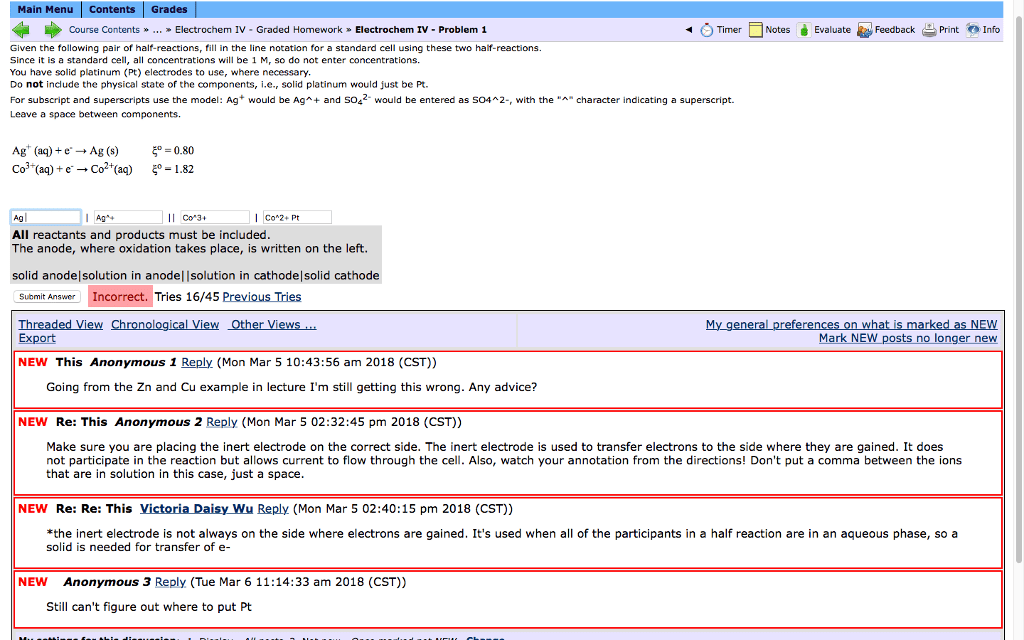In this experiment you will construct a smal electrolytic cell. Then using indicators you will determine the products fromed at the anode and the cathode druing several different electrolysis experiments.
About the experiment: in the first part of this experiment you will construct a small scale chlorine production plant. it is a miniature of the real, large scale process used for production of chlorine by the electrolysis of sodium chloride or brine (procedure written by Dr. Stephen thompson, CSU, CO) You will then investigate the electrolysis of several other aqueous solutions. You will perform the electrolysis in a solution containing an idicator to help you identify the reaction products. Because chlorine gas is toxic, do not extend the time of the electrolysis unnecessarily, keep the electrodes in the solution only as long as you need to see the results and then remove them.
Prodedure: Part 1
1. Place a drop of dilute mineral acid on the lid of a 24-well tray. Add a drop of bromocresol green
2. Place a drop of dilute strong base on thelid of a 24 well tray. Add a drop of bromocresol gree.
Production of Chlorine:
1. Fill one well of a 24 well tray about 3/4 full with brine (saturation NaCl solution). Add 3 drops of bromocresol green to the brine solution in the well. Record the color of the solution in the well.
2. Place the electrolytic set up (straws and electrodes) in the well. Make sure that the electrodes are inserted deep into the solution
3. Attach the alligator clips to the electrodes but not attach the battery yet.
4. Place a small drop of strch/KI solution on the upper part of the inside wall of each straw.
5. Place a cap on the straw containing the lead (anode)
6. Attache the battery to the set up. Keep the battery on for about 3-5 seconds, long enough to observe the changes. Record you observations. If bubbles appear of solution colors change make sure that you record that. It is important to record the initial and final colors of the soltuion. Also note any change in the starch/KI solution in the straw at the anode.
7. Detacht he alligator clips and clean
part 2: investigating the electrolysis process of water and aqueous salt solutions
For part two of the experiment, use the lid of the 24 well tray to hold your solutions. Make sure that it is clean and dry. Use the same pin as in part 1 for one electrode and a second pin for the other electrode (no graphite used). To perform the electrolysis, attach the alligator clips to the pins and then connect the leads to the battery . Hold the alligator clips by their plastic insulation and insert them into the solution in such a way that they are as par apart as possible, yet immersed fully in the solution. Make careful observasion and redord what happens in hte solution around each electrode for every investigation carried out.
1. H2O
a. Place 4 drops of distilled water in one of the circles on the lid. Perform electrolysis for about 3 seconds.
b. Repeat step one but use tap water
2. Na2SO4 or K2SO4
a. perform electrolysis on 4 drops of 0.1 M Na2SO4 solution for about 3 seconds
b. Place 4 drops of 0.1 M Na2SO4 solution in another circle, add one drop of bromothymol blue, and electrolize for about 3 seconds.
3. KI or NaI
a. perform electrolysis on four drops of 0.1 M KI solution for about 3 seconds
b. Place 4 drop of 0.1 M KI solution in another circle , add 1 drop of starch solution , and perform electrolysis for about 3 seconds.
KI or NaI
A. Can you easily determine the identities of the products formed on the electrodes based on the first part of this experiment? explain
B. In the second part, why does the starch added to the solution change color?
C. How does the starch help in identifying the products of the oxidation reaction and the chemical species being oxidized?
D. write the equation for the redox reaction taking place at the anode
E. write the equation for the redox reaction taking place at the cathode


